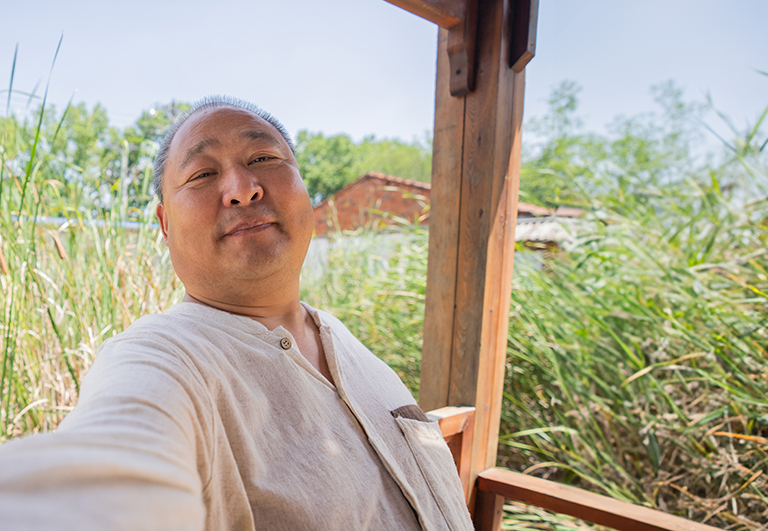
Changsheng's Story: New Lease on Life
Navigating life with type 2 diabetes, Changsheng from Wuhan, China, discovered how to stay true to his passions—singing, exercising, and enjoying good food...

As part of the Long Story Short series, we are sharing the stories of people around the world who are living with type 2 diabetes. This is Felipe's story.
Meet Felipe, a natural science teacher from Santiago, Chile, whose life took an unexpected turn when he was diagnosed with type 2 diabetes. Before his diagnosis, Felipe, like so many others, had little knowledge about the condition and had always viewed diabetes treatment through a lens of fear and uncertainty.
At 29 years old, when the diagnosis became a reality, Felipe made a powerful decision: to learn everything he could about type 2 diabetes and what was happening within his body. Doing this changed everything, even inspiring him to become a natural science teacher. Now, he says that sharing knowledge about the human body is his passion and his profession.
Looking back, Felipe says his initial misconceptions of insulin therapy were shaped by his grandmother, who used insulin to treat her type 2 diabetes. As a child, Felipe watched her carefully prepare for her injections – carrying a metal box of large needles that had to be sterilized by boiling after each use. For Felipe, this painted a picture of insulin therapy as something burdensome, something to be feared.
In turn, Felipe feared insulin injections, the side effects of insulin, and saw being dependent on insulin as a major disruption to one’s life. He was not alone in feeling like this, in fact more than 50% of people living with type 2 diabetes delay insulin initiation by more than two years past the point of needing it1,2.
When Felipe was diagnosed, he realised that these days, the reality of diabetes management is completely different to what he had imagined. The tools, the routines – they were nothing like what he had feared. Those scary injections? New needles and devices have helped to quell his fears of self-injecting. It’s now just another part of his day, as routine as brushing his teeth.
This newfound comfort with injections inspired Felipe to give back to his community. He now volunteers at a foundation where he teaches young children with diabetes how to inject themselves, turning what was once a fear into a source of empowerment for others.
In Chile, family and food are at the heart of the culture, and Felipe worried that diabetes might take away his ability to enjoy meals with his loved ones. The biggest surprise? According to Felipe, insulin therapy has given him more freedom, not less. By making a few tweaks to his family’s recipes, he can still savor the dishes he loves. Cooking has now become a fun, creative challenge that brings his family even closer.
Has your doctor suggested that you might need insulin to treat your type 2 diabetes? Read through our guide and take notes on questions you can ask your healthcare professional
HQ24DI00345